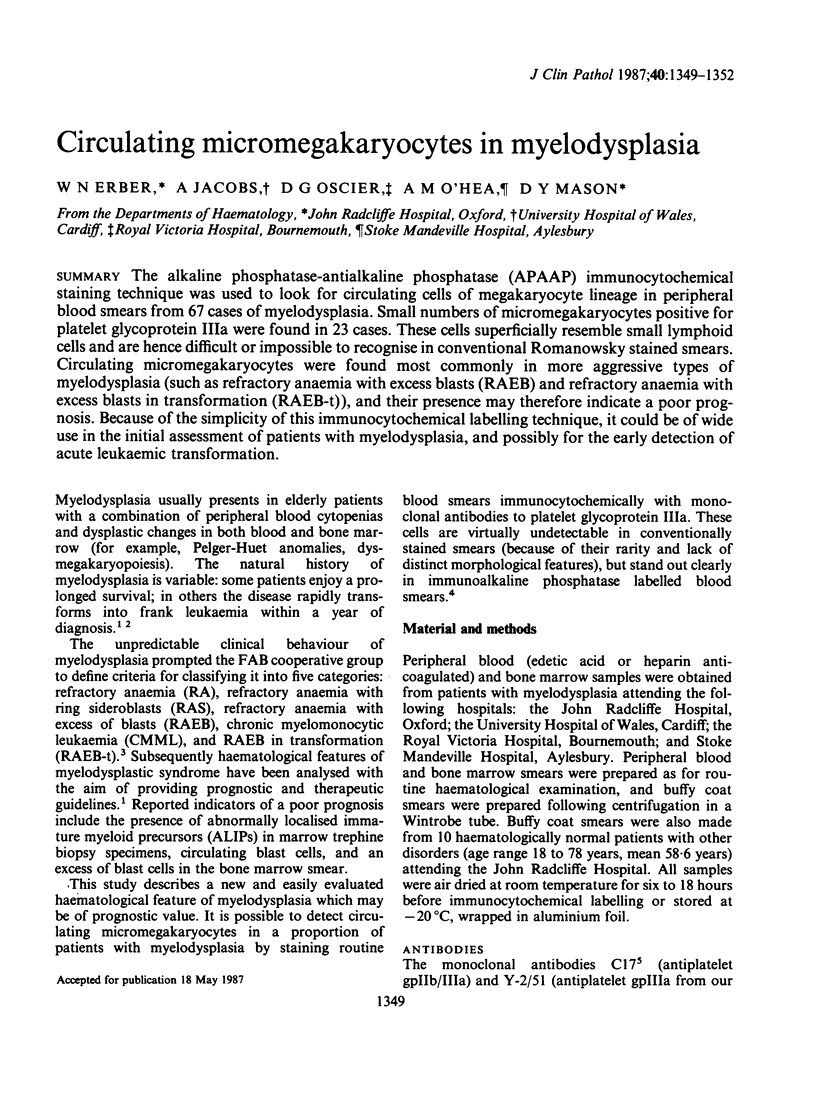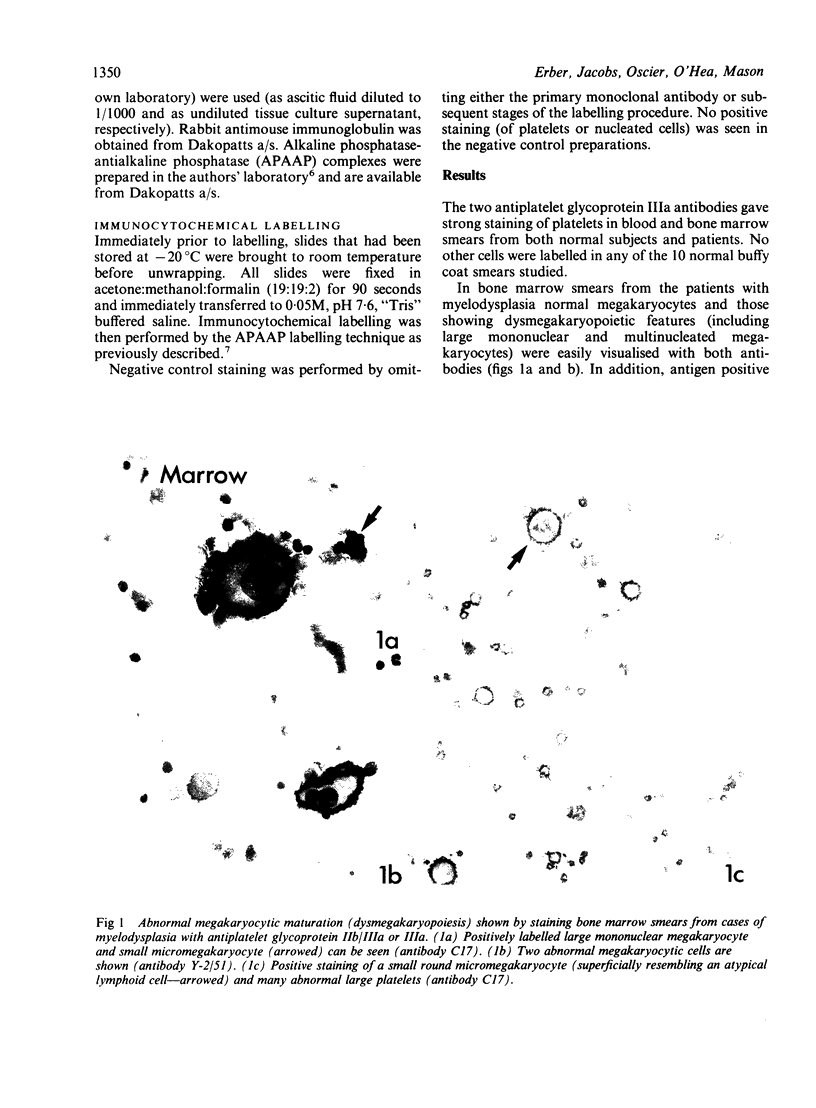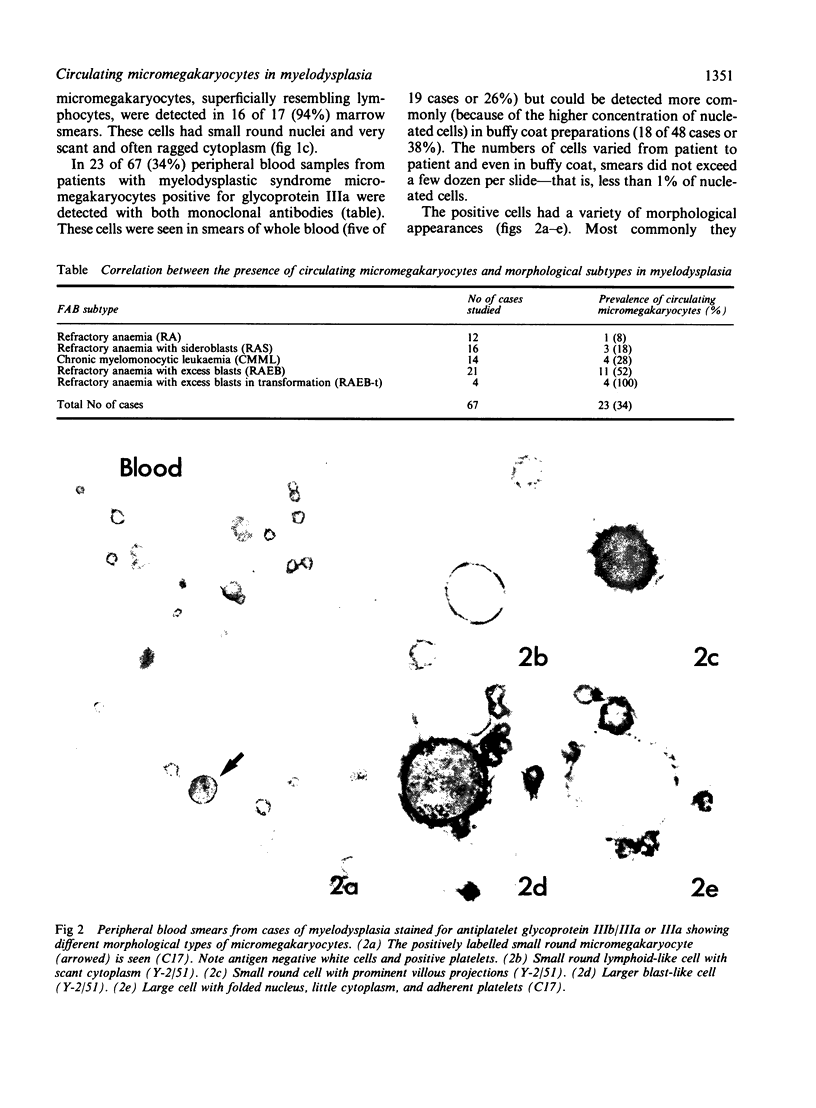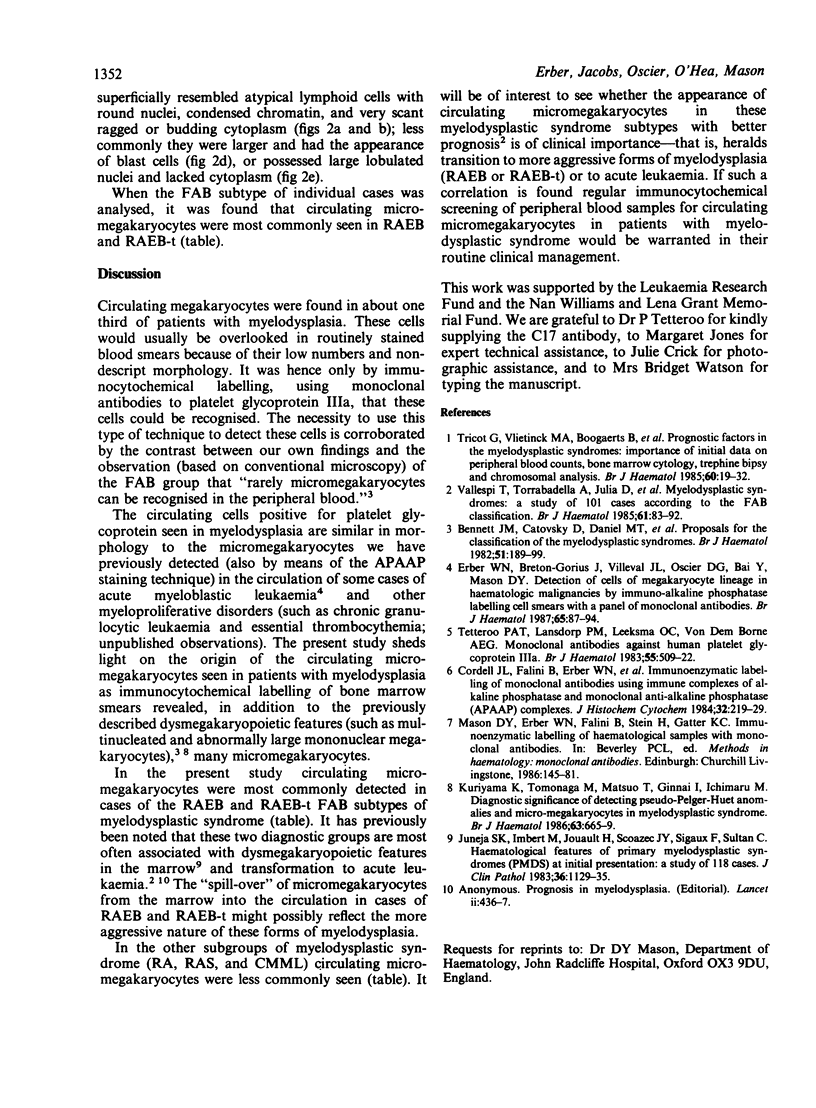Abstract
The alkaline phosphatase-antialkaline phosphatase (APAAP) immunocytochemical staining technique was used to look for circulating cells of megakaryocyte lineage in peripheral blood smears from 67 cases of myelodysplasia. Small numbers of micromegakaryocytes positive for platelet glycoprotein IIIa were found in 23 cases. These cells superficially resemble small lymphoid cells and are hence difficult or impossible to recognise in conventional Romanowsky stained smears. Circulating micromegakaryocytes were found most commonly in more aggressive types of myelodysplasia (such as refractory anaemia with excess blasts (RAEB) and refractory anaemia with excess blasts in transformation (RAEB-t], and their presence may therefore indicate a poor prognosis. Because of the simplicity of this immunocytochemical labelling technique, it could be of wide use in the initial assessment of patients with myelodysplasia, and possibly for the early detection of acute leukaemic transformation.
Full text
PDF



Images in this article
Selected References
These references are in PubMed. This may not be the complete list of references from this article.
- Bennett J. M., Catovsky D., Daniel M. T., Flandrin G., Galton D. A., Gralnick H. R., Sultan C. Proposals for the classification of the myelodysplastic syndromes. Br J Haematol. 1982 Jun;51(2):189–199. [PubMed] [Google Scholar]
- Cordell J. L., Falini B., Erber W. N., Ghosh A. K., Abdulaziz Z., MacDonald S., Pulford K. A., Stein H., Mason D. Y. Immunoenzymatic labeling of monoclonal antibodies using immune complexes of alkaline phosphatase and monoclonal anti-alkaline phosphatase (APAAP complexes). J Histochem Cytochem. 1984 Feb;32(2):219–229. doi: 10.1177/32.2.6198355. [DOI] [PubMed] [Google Scholar]
- Erber W. N., Breton-Gorius J., Villeval J. L., Oscier D. G., Bai Y., Mason D. Y. Detection of cells of megakaryocyte lineage in haematological malignancies by immuno-alkaline phosphatase labelling cell smears with a panel of monoclonal antibodies. Br J Haematol. 1987 Jan;65(1):87–94. doi: 10.1111/j.1365-2141.1987.tb06140.x. [DOI] [PubMed] [Google Scholar]
- Juneja S. K., Imbert M., Jouault H., Scoazec J. Y., Sigaux F., Sultan C. Haematological features of primary myelodysplastic syndromes (PMDS) at initial presentation: a study of 118 cases. J Clin Pathol. 1983 Oct;36(10):1129–1135. doi: 10.1136/jcp.36.10.1129. [DOI] [PMC free article] [PubMed] [Google Scholar]
- Kuriyama K., Tomonaga M., Matsuo T., Ginnai I., Ichimaru M. Diagnostic significance of detecting pseudo-Pelger-Huët anomalies and micro-megakaryocytes in myelodysplastic syndrome. Br J Haematol. 1986 Aug;63(4):665–669. doi: 10.1111/j.1365-2141.1986.tb07550.x. [DOI] [PubMed] [Google Scholar]
- Tetteroo P. A., Lansdorp P. M., Leeksma O. C., von dem Borne A. E. Monoclonal antibodies against human platelet glycoprotein IIIa. Br J Haematol. 1983 Nov;55(3):509–522. doi: 10.1111/j.1365-2141.1983.tb02166.x. [DOI] [PubMed] [Google Scholar]
- Tricot G., Vlietinck R., Boogaerts M. A., Hendrickx B., De Wolf-Peeters C., Van den Berghe H., Verwilghen R. L. Prognostic factors in the myelodysplastic syndromes: importance of initial data on peripheral blood counts, bone marrow cytology, trephine biopsy and chromosomal analysis. Br J Haematol. 1985 May;60(1):19–32. doi: 10.1111/j.1365-2141.1985.tb07381.x. [DOI] [PubMed] [Google Scholar]
- Vallespi T., Torrabadella M., Julia A., Irriguible D., Jaen A., Acebedo G., Triginer J. Myelodysplastic syndromes: a study of 101 cases according to the FAB classification. Br J Haematol. 1985 Sep;61(1):83–92. doi: 10.1111/j.1365-2141.1985.tb04063.x. [DOI] [PubMed] [Google Scholar]




